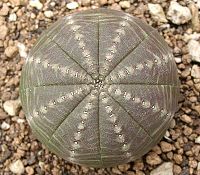
Photo from wikipedia
Experimental evolution in chemical models of cells could reveal the fundamental mechanisms of cells today. Various chemical cell models, water-in-oil emulsions, oil-on-water droplets, and vesicles have been constructed in order… Click to show full abstract
Experimental evolution in chemical models of cells could reveal the fundamental mechanisms of cells today. Various chemical cell models, water-in-oil emulsions, oil-on-water droplets, and vesicles have been constructed in order to conduct research on experimental evolution. In this review, firstly, recent studies with these candidate models are introduced and discussed with regards to the two hierarchical directions of experimental evolution (chemical evolution and evolution of a molecular self-assembly). Secondly, we suggest giant vesicles (GVs), which have diameters larger than 1 µm, as promising chemical cell models for studying experimental evolution. Thirdly, since technical difficulties still exist in conventional GV experiments, recent developments of microfluidic devices to deal with GVs are reviewed with regards to the realization of open-ended evolution in GVs. Finally, as a future perspective, we link the concept of messy chemistry to the promising, unexplored direction of experimental evolution in GVs.
Journal Title: Life
Year Published: 2018
Link to full text (if available)
Share on Social Media: Sign Up to like & get
recommendations!